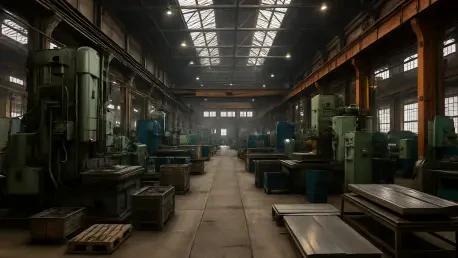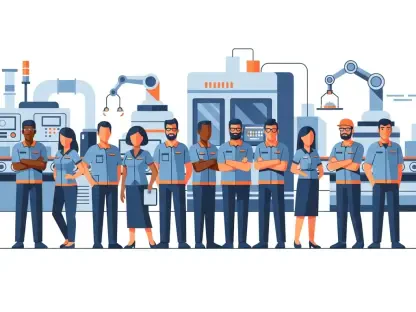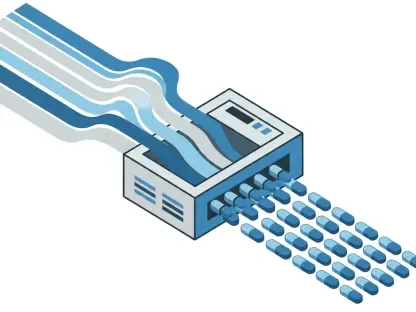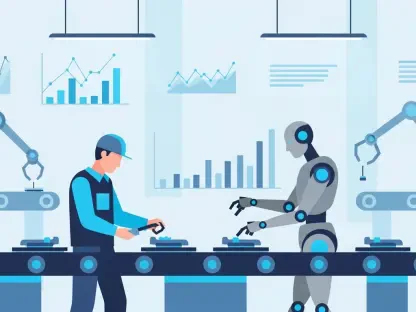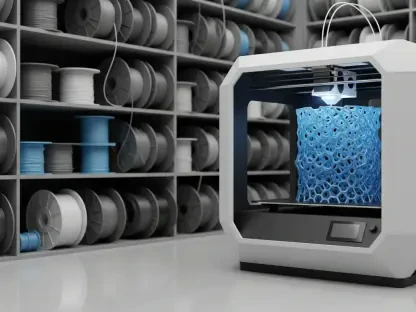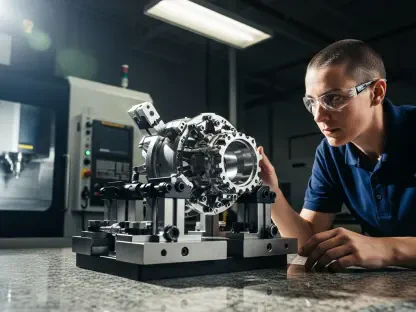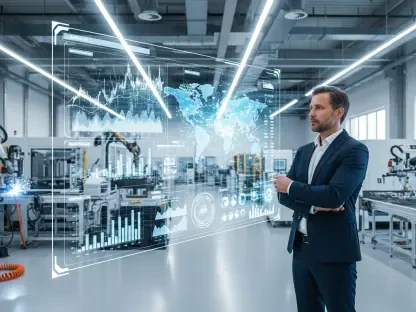In the high-stakes arena of modern manufacturing, ensuring that factory assets operate at peak performance is not just a goal but a necessity for survival amidst relentless competition and unforeseen disruptions. A single equipment failure, such as a malfunctioning conveyor belt or a faltering welding machine, can trigger a cascade of setbacks—halting production lines, disrupting supply chains, and even jeopardizing sustainability targets. Fortunately, a transformative solution emerges through the integration of artificial intelligence (AI) and condition-based maintenance (CBM), a dynamic partnership that redefines how factories maintain efficiency. This powerful combination leverages real-time data and cutting-edge analytics to anticipate problems before they strike, slashing downtime and elevating productivity to new heights. This article delves into the mechanics of this synergy, exploring how these technologies are reshaping industrial maintenance and setting a new standard for operational excellence in an unpredictable landscape.
Revolutionizing Industrial Maintenance
The Limits of Conventional Approaches
Traditional maintenance strategies, often rooted in reactive repairs or fixed schedules, struggle to keep pace with the complexities of today’s industrial environment. When equipment fails unexpectedly, the ripple effects can be severe, impacting everything from inventory management to customer commitments. Supply chain volatility, fluctuating market demands, and evolving regulations further complicate the scenario, making asset reliability a critical priority. Unlike outdated methods that either wait for breakdowns or follow rigid timelines regardless of actual need, CBM offers a smarter path by monitoring equipment health through real-time data. This approach ensures interventions occur only when necessary, minimizing waste and maximizing uptime. The shift away from guesswork to precision reflects a broader industry trend toward efficiency, where every decision must be informed by actionable insights to maintain a competitive edge in a challenging manufacturing world.
Harnessing AI for Enhanced Precision
Artificial intelligence elevates CBM to unprecedented levels by infusing it with advanced analytical capabilities and automation. Machine learning algorithms can process vast amounts of data from factory assets, detecting subtle anomalies that might signal an impending failure. Meanwhile, generative AI streamlines administrative burdens by automating tasks like work order generation and failure analysis, saving valuable time. On the frontier, agentic AI promises even greater autonomy, potentially managing complex maintenance workflows with minimal human input. For manufacturers still reliant on legacy software, the risk of obsolescence looms large as competitors adopt these tools to optimize operations and reduce costs. The integration of AI with CBM transforms raw data—such as temperature or vibration readings—into predictive insights, enabling proactive responses that keep production lines running smoothly and prevent costly disruptions from derailing factory performance.
The Shift to Predictive Maintenance
Why Traditional Methods Don’t Cut It
The industrial sector is rapidly pivoting away from old-school maintenance practices that rely on reacting to failures or adhering to predetermined schedules, as these often lead to unnecessary downtime and inflated costs. In an era where operational efficiency can make or break a business, waiting for a machine to break down before addressing issues is a gamble few can afford. Similarly, routine maintenance performed regardless of equipment condition wastes resources on assets that may not need attention. CBM, paired with AI, offers a data-driven alternative by continuously monitoring key metrics like pressure or wear, allowing factories to address potential problems before they escalate. This predictive approach not only saves money but also aligns with the digital transformation sweeping through manufacturing, where automation and real-time analytics are becoming indispensable for maintaining a competitive stance in a fast-evolving market.
Building a Data-Driven Maintenance Culture
Adopting CBM and AI requires more than just technology—it demands a cultural shift within manufacturing organizations toward embracing data as the backbone of decision-making. Factories equipped with sensors on critical assets like pumps or motors can gather continuous streams of information, which AI systems then analyze to forecast maintenance needs with remarkable accuracy. This reduces the likelihood of unexpected breakdowns that disrupt production and strain resources. Beyond immediate benefits, this strategy fosters a proactive mindset among teams, encouraging them to trust in predictive insights rather than relying on outdated instincts or schedules. While the upfront investment in technology and training may seem daunting, the long-term gains in reliability and cost savings far outweigh initial hurdles. As smart factories become the norm, those who build this data-driven culture will be better positioned to navigate the complexities of modern industrial demands.
A Future-Ready Strategy
Preparing for Industry 4.0 Innovations
The synergy of CBM and AI is not merely a fix for today’s challenges but a cornerstone for thriving in the era of Industry 4.0, where interconnected systems and predictive analytics define manufacturing excellence. Envision a factory where equipment self-reports its condition in real time, and AI not only identifies issues but also orchestrates repairs without human intervention. While some advancements, such as agentic AI, remain on the cutting edge and are still maturing, they signal a future of minimal oversight and maximum operational efficiency. Manufacturers adopting these technologies now gain a head start, embedding scalability into their processes to handle future complexities. This forward-thinking approach ensures that maintenance evolves from a reactive burden into a strategic asset, aligning with broader industry goals of automation and sustainability in an increasingly digital industrial landscape.
Overcoming Adoption Challenges
Despite the clear advantages, integrating CBM and AI into factory operations is not without challenges, particularly around initial costs and organizational adaptation. Implementing sensors, software, and training programs requires significant investment, which can be a barrier for smaller manufacturers or those with tight budgets. Additionally, shifting from traditional methods to a tech-centric model often meets resistance from teams accustomed to familiar routines. Addressing these obstacles involves demonstrating tangible benefits—such as reduced downtime and lower repair costs—through pilot projects that build confidence in the technology. Partnerships with technology providers can also ease the transition by offering scalable solutions tailored to specific needs. As the industry has seen in recent implementations, those who tackled these hurdles head-on reaped substantial rewards, setting a precedent for others to follow in modernizing maintenance practices for sustained success.
Reflecting on Transformative Impacts
Looking back, the integration of condition-based maintenance with artificial intelligence marked a pivotal shift in how factories approached asset management. This powerful combination enabled manufacturers to move beyond the inefficiencies of reactive repairs, adopting a predictive stance that curtailed downtime and enhanced reliability. The ability of AI to analyze real-time data from CBM systems proved instrumental in preempting failures, while automation of routine tasks freed skilled workers for more critical roles. As industries navigated complex challenges, those who embraced this synergy discovered a pathway to not only survive but thrive. Moving forward, the focus should center on scaling these technologies across diverse manufacturing environments, ensuring accessibility for smaller players through cost-effective solutions. Exploring further innovations, especially in autonomous AI systems, will be crucial to sustaining this momentum, cementing maintenance as a driver of operational excellence.
